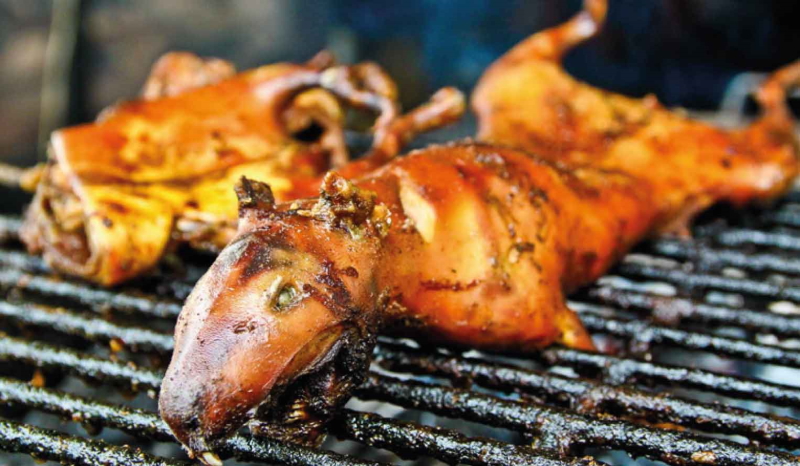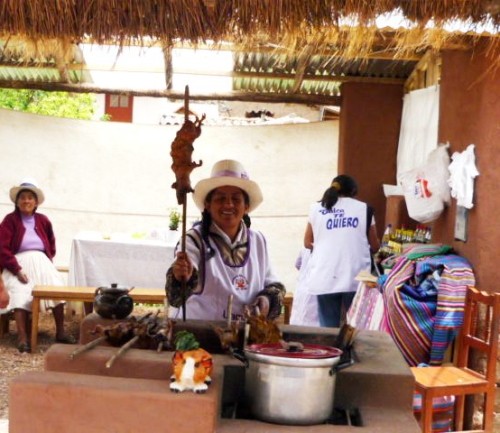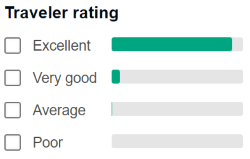Guinea Pig on a Stick!
“Guinea Pig on a stick?”, we hear you shout. “You can’t do that, they are family pets!”. Here in Peru, they are not pets, and yes you can! They are a part of the highland diet, with various interesting preparation styles, some of which might upset the non-carnivorous amongst you.
Regardless of your dietary preferences, you cannot visit Peru without realizing that the Guinea Pig (or Cuy, as it is known here) is a very important part of Peruvian culture, identity, and diet.
Guinea Pigs in the Peruvian Culture
There is famously a painting of the Last Supper hanging in Cusco Cathedral which shows Jesus and his 12 disciples feasting on a Cuy! Some 65 million of these small animals are consumed each year in Peru (the count is increased by those eaten in Ecuador and Bolivia), and when you travel out into the countryside here, especially at the weekend, you will see many stalls selling the roasted critter.
As far back as 5000 BC, this animal – which is neither a pig nor from Guinea – was domesticated in the Peruvian and Bolivian Altiplano (high plains) as a food source. Even with all the present-day alternatives, it is still an important food source for people living in the countryside, and tourists are delighted and repulsed in equal measure when they get a chance to try it. We are told by our clients that they enjoy it, more often than not, and although there is not a great deal of meat on the little beast, it is very tasty.
You mean they farm Guinea Pigs?
Guinea pigs are often raised in the back yard of the simple dwellings that most rural Peruvians inhabit. They will have a simple wooden box to sleep in, be given alfalfa to eat, and scurry about all over the house until they are big enough to end up in the oven. Ironically they will normally try to sleep under the oven to keep warm, not knowing that one day soon they will be in it!
When you are out on a Peru tour, try to persuade your guide to get you a peek into a patio where they might be. As more and more people have moved to the cities, the practice continues there and you can see many urban homes with the little creatures in their yards too.
More than one way to cook it?
Some of the ways the Guinea Pig is prepared provide great photo opportunities. The best one in our opinion is where the animal is roasted whole and presented essentially standing on a plate, surrounded by various accompaniments, tomato or carrot in its mouth … and a little tomato hat! There is also the serving which looks like roadkill – almost completely flat – and, as the heading of this blog suggests, on a stick!
You can also see (in the photo) that a woman offering it to our clients who stopped to see what was going on. This is very common in the Sacred Valley of the Incas close to Cusco. Amusingly, you can see she has a cuddly toy guinea pig on display to show the “before” and “after”, or maybe to help people understand where the roasted meat came from? As if they did not already know!
Peruvian food is some of the best in the world, with the fusion of new and traditional ingredients, styles, and imagination. Peruvian chefs, such as Gaston Acurio, have opened high-class establishments all over the world, but something very gratifying for those of us that live here is how Peruvians also hold onto the past, maintaining their ancient customs, and that definitely includes food. So while Guinea Pig on a stick (or otherwise) might not be to everyone’s taste, Peru is sure to have some food that you will love.




